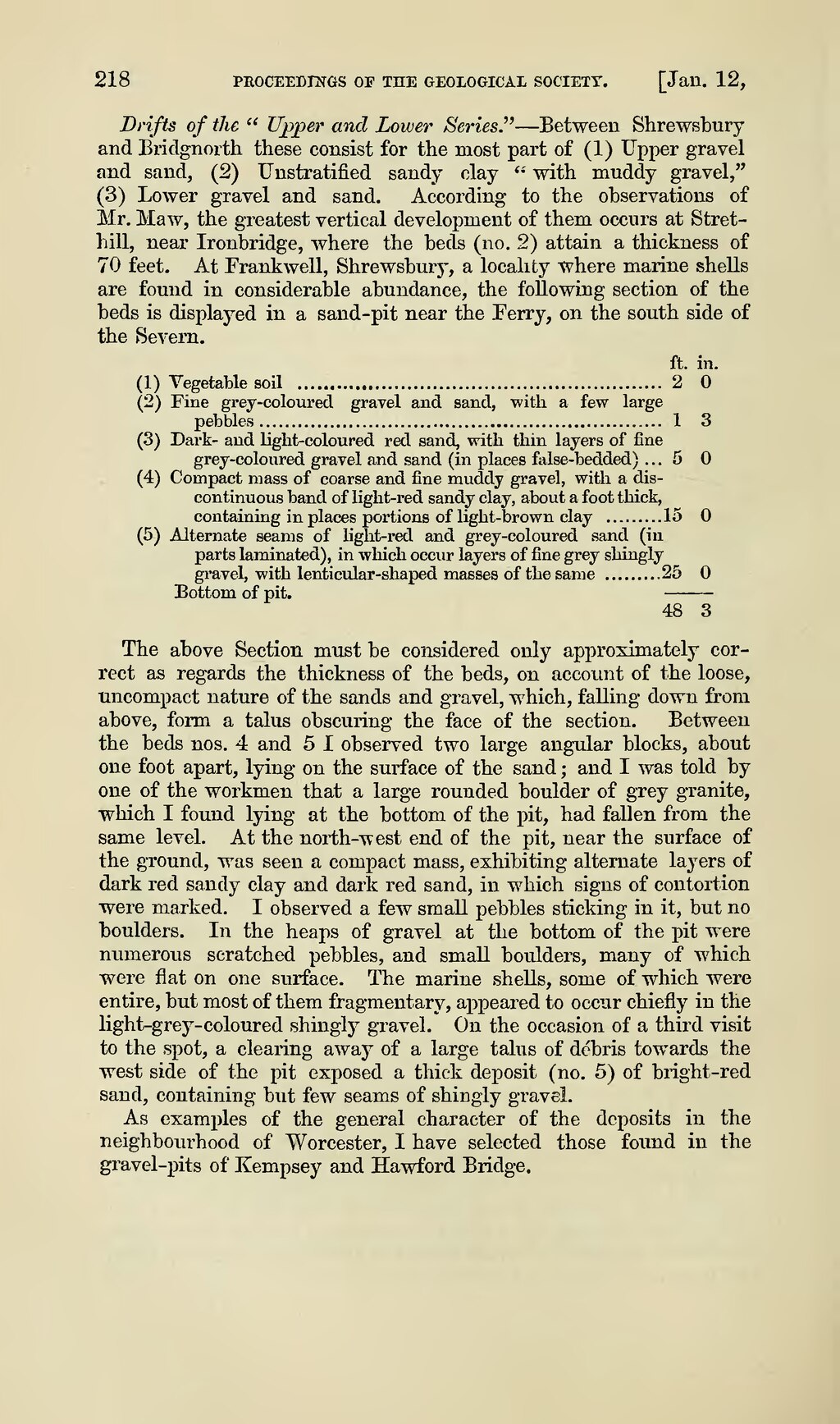218 PROCEEDINGS OF THE GEOLOGICAL SOCIETY. [Jan. 12,
Drifts of the " Upper and Lower Series." — Between Shrewsbury
and Bridgnorth these consist for the most part of (1) Upper gravel
and sand, (2) Unstratified sandy clay " with muddy gravel,"
(3) Lower gravel and sand. According to the observations of
Mr. Maw, the greatest vertical development of them occurs at Strethill,
near Ironbridge, where the beds (no. 2) attain a thickness of
70 feet. At Frankwell, Shrewsbury, a locality where marine shells
are found in considerable abundance, the following section of the
beds is displayed in a sand-pit near the Ferry, on the south side of
the Severn.
ft. in.
(1) Vegetable soil 2 0
(2) Fine grey-coloured gravel and sand, with a few large pebbles 1 3
(3) Dark- and light-coloured red sand, with thin layers of fine grey-coloured gravel and sand (in places false-bedded) ... 5 0
(4) Compact mass of coarse and fine muddy gravel, with a discontinuous band of light-red sandy clay, about a foot thick, containing in places portions of light-brown clay 15 0
(5) Alternate seams of light-red and grey-coloured sand (in parts laminated), in which occur layers of fine grey shingly gravel, with lenticular-shaped masses of the same 25 0
Bottom of pit. 48 3
The above Section must be considered only approximately correct as regards the thickness of the beds, on account of the loose, uncompact nature of the sands and gravel, which, falling down from above, form a talus obscuring the face of the section. Between the beds nos. 4 and 5 I observed two large angular blocks, about one foot apart, lying on the surface of the sand ; and I was told by one of the workmen that a large rounded boulder of grey granite, which I found lying at the bottom of the pit, had fallen from the same level. At the north-west end of the pit, near the surface of the ground, was seen a compact mass, exhibiting alternate layers of dark red sandy clay and dark red sand, in which signs of contortion were marked. I observed a few small pebbles sticking in it, but no boulders. In the heaps of gravel at the bottom of the pit were numerous scratched pebbles, and small boulders, many of which were flat on one surface. The marine shells, some of which were entire, but most of them fragmentary, appeared to occur chiefly in the light-grey- coloured shingly gravel. On the occasion of a third visit to the spot, a clearing away of a large talus of debris towards the west side of the pit exposed a thick deposit (no. 5) of bright-red sand, containing but few seams of shingly gravel.
As examples of the general character of the deposits in the neighbourhood of "Worcester, I have selected those found in the gravel-pits of Kempsey and Hawford Bridge.
